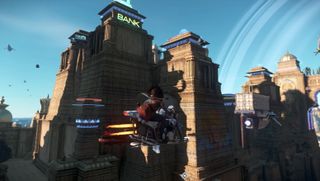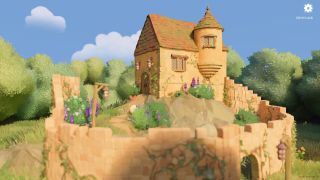
Lauren Morton
Lauren started writing for PC Gamer as a freelancer in 2017 while chasing the Dark Souls fashion police and accepted her role as Associate Editor in 2021, now serving as the self-appointed chief cozy games enjoyer. She originally started her career in game development and is still fascinated by how games tick in the modding and speedrunning scenes. She likes long books, longer RPGs, has strong feelings about farmlife sims, and can't stop playing co-op crafting games.
Latest articles by Lauren Morton

2024 games: All the PC games scheduled for launch this year
By Lauren Morton last updated
Upcoming 2024 is here, so take a look ahead at what's confirmed for the PC release schedule.

The Elder Scrolls 6: everything we know about the next return to Tamriel
By Omri Petitte last updated
scroll locked The Elder Scrolls 6 is still very far away, but we've collected all the news and rumors while we wait.

Elden Ring: Shadow of the Erdtree unlock times and release date
By Lauren Morton last updated
Launch Times The Shadow of the Erdtree launch times are about as arcane a quest to unravel as the game itself.

Elden Ring: Shadow of the Erdtree guide
By Lauren Morton published
Erdtree All the guides and walkthroughs you need to survive Shadow of the Erdtree and the Land of Shadow.

Borderlands 3 Shift codes: Every active Shift code and how to redeem them
By Lauren Morton, Wes Fenlon last updated
Prepare An updated list of the latest Borderlands 3 shift codes for Golden Keys, and how to unlock special loot.

The best Minecraft texture packs
By Lauren Morton last updated
Updated! We've rounded up a new list of the best Minecraft texture packs for both Java and Bedrock

All Disney Dreamlight Valley codes and how to redeem them
By Lauren Morton last updated
Castle Keys Cash in these Dreamlight Valley codes for free outfits and furniture.

Dragon Age: The Veilguard leads say it will be 'mission-based' rather than open world, with no fetch quests or busywork: 'You're not going to be gathering shards in the Hinterlands'
By Ted Litchfield published
news I remain in a state of neutral, cautious optimism for Veilguard, and this is a sign they're on the right track.

Dragon Age: The Veilguard can be played entirely offline and won't have microtransactions: 'Our focus is on making this the most complete singleplayer game we possibly can'
By Andy Chalk published
news Game director Corinne Busche said enabling offline play has been "a really big request" from fans.

Let's pour one out for these no-shows we were desperate to see during Summer Game Fest
By Kara Phillips published
Maybe next time Maybe in the next life.

Dragon Age: The Veilguard—Everything we know about the next RPG in Thedas
By Lauren Morton last updated
Dragon 4ge Here's everything we've collected about The Veilguard since its big reveal.

Larian already made the Dragon Age 4 I was hoping for
By Lauren Morton published
Age Killer The gameplay reveal for The Veilguard feels like it hardly wants to be a Dragon Age game at all.

Tiny Glade's castle-doodling demo is packed with delightful little reactive surprises
By Lauren Morton last updated
Castle Crafting Each structure has its own secrets to figure out.

Minecraft 1.21: everything we know about the next major Minecraft update
By Lauren Morton last updated
Minecraft 1.21 The 1.21 update is all about new combat challenges so far.

I'm slightly less panicked about Dragon Age: The Veilguard after seeing 24 seconds of gameplay
By Lauren Morton published
News BioWare just dropped a teaser for tomorrow's gameplay reveal and, okay, it looks better than that reveal trailer.

Every game, trailer, and announcement in the 2024 PC Gaming Show
By Lauren Morton published
The Big List Catch up on the 70+ trailers and 15 first reveals from this year's massive PC Gaming Show.

Hotel Galactic is a cozy Ghibli-inspired crafting and management sim where you'll host adorable intergalactic visitors
By Lauren Morton published
PCGS Tidy up and make sure the water is warm for all your extraterrestrial customers.

Captain your own flying island base in wind-powered crafting survival game Aloft's new co-op demo
By Lauren Morton published
PCGS As if picking the perfect place to build wasn't tough enough, now I have to go island hopping.

Slavic witchcrafting game Reka is equal parts cozy and creepy and it's coming to early access in August
By Lauren Morton published
PCGS Become a witch of the woods and make Baba Yaga proud.

Splodey is a platformer that 'does away with the jump button' in favor of magical propulsion platforming
By Lauren Morton published
PCGS I can't even begin to think of platforming backwards.

'Not too cozy' farm sim Everholm has brought back its demo for more mysterious witch simming
By Lauren Morton published
PCGS Everholm's demo is back for you to try its take on a less linear life sim.

Drug Dealer Simulator 2 launches this month with co-op drug empire management and nostalgia for the early 2000s
By Lauren Morton published
PCGS It's dangerous to grow alone.

Unbeatable is an exceedingly cool rhythm RPG 'where music is illegal' coming in 2025
By Lauren Morton published
PCGS The demo is pretty slick and the full game is shaping up for next year.

